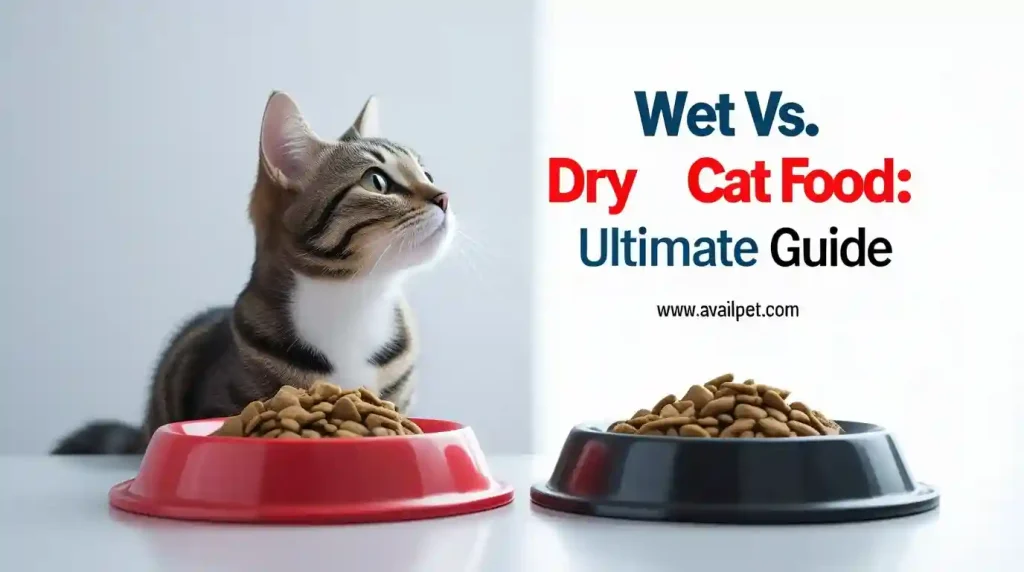🔑 Key Takeaways: Hypoallergenic Cats
- No 100% Guarantee: No cat is truly 100% hypoallergenic.
- Top Low-Allergen Breeds: Siberian, Balinese, Russian Blue, Cornish Rex, Devon Rex.
- The Cause: Allergies are triggered by the Fel d 1 protein in saliva, not just fur.
- Pro Tip: Spend time with a breed before adopting to test your reaction.
Introduction: Can You Really Find a Cat That Doesn’t Trigger Allergies?
For millions of cat lovers, the joy of feline companionship comes with an uncomfortable price: sneezing, itchy eyes, and constant congestion. But what if you could find a cat that doesn’t leave you reaching for the antihistamines? While no cat is completely allergen-free, certain best hypoallergenic cat breeds produce significantly lower levels of the Fel d 1 protein—the primary culprit behind allergic reactions.
This guide, informed by veterinary science, explores the top cat breeds known for being better tolerated by allergy sufferers. We’ll help you understand the science behind cat allergies and introduce you to cats for allergy sufferers that might just make your dream of cat ownership possible.
Understanding “Hypoallergenic”: What It Really Means
Before we explore specific breeds, it’s crucial to understand what “hypoallergenic” actually means when it comes to cats. The term often creates unrealistic expectations, so let’s clarify the science behind cat allergies.
First and foremost: no cat is 100% hypoallergenic. The concept of “hypoallergenic cat breeds” refers to cats that typically produce fewer allergens than others, not zero allergens.
The primary trigger for cat allergies is a protein called Fel d 1, which is produced in a cat’s saliva, skin, and tear glands. When cats groom themselves, this protein spreads to their fur and eventually becomes airborne through dead skin cells (dander). It’s not the cat hair itself that causes allergies, but this protein that hitchhikes on it.
Several factors influence how much Fel d 1 a cat produces:
- Genetics: Some breeds naturally produce less of the protein due to their genetic makeup
- Coat Type: Cats with unusual coat structures (like Rex breeds) may shed less dander
- Grooming Habits: Fastidious groomers spread more saliva on their fur
- Sex: Intact male cats typically produce the most allergens
Understanding this science helps explain why some low allergen cats might work for allergy sufferers while others don’t. It’s not just about fur length or shedding—it’s about the complex interaction of biology and genetics.
The 10 Best Hypoallergenic Cat Breeds
Here are our top picks for feline companions known to produce lower levels of the Fel d 1 protein, making them better suited for allergy sufferers.
1. Siberian
At a Glance: Lower Fel d 1 | Friendly | Playful | Perfect for: Families with mild allergies
Despite their luxurious triple coat, Siberians are famous for producing lower levels of the Fel d 1 protein. Many allergy sufferers report tolerating these friendly, playful cats well, though individual reactions can vary.
2. Balinese
At a Glance: Lower Allergen | Vocal | Intelligent | Perfect for: Those wanting a long-haired hypoallergenic cat
Don’t let the long coat fool you – the Balinese produces less of the Fel d 1 protein than many other breeds. These intelligent, vocal cats combine elegance with lower allergen production.
3. Russian Blue
At a Glance: Low-Allergen Dander | Reserved | Gentle | Perfect for: Quiet households
The Russian Blue’s dense double coat traps dander close to the skin, and they’re known to produce less glycoprotein. Their gentle, reserved nature makes them excellent companions for allergy-sensitive homes.
4. Bengal
At a Glance: Pelt-Like Coat | Energetic | Low Shedding | Perfect for: Active owners
Bengals have unique, pelt-like coats that shed minimally, reducing the spread of dander. Their wild appearance matches their energetic personality, but their low-maintenance coat helps with allergens.
5. Cornish Rex
At a Glance: Minimal Coat | Playful | Mischievous | Perfect for: Severe allergy sufferers
With only a soft, wavy undercoat, the Cornish Rex sheds very little dander. Their minimal coat means fewer places for allergens to hide, making them one of the best choices for significant allergies.
6. Devon Rex
At a Glance: Even Less Coat | Playful | Impish | Perfect for: Those wanting an elfin-looking cat
The Devon Rex has an even shorter, finer coat than the Cornish Rex. Often called the “poodle of the cat world,” they’re a top contender for allergy-friendly cats due to their minimal shedding.
7. Javanese
At a Glance: Single Coat | Vocal | Social | Perfect for: Those wanting color variety
Like the Balinese, the Javanese has a single coat without a dense undercoat, which results in less shedding and fewer allergens being spread around your home.
8. Sphynx
At a Glance: Hairless | Affectionate | Requires Bathing | Perfect for: Those committed to grooming
The classic hairless option, the Sphynx has no fur to trap dander. However, they require weekly bathing to remove oily skin buildup, and some people can still react to their skin dander.
9. Oriental Shorthair
At a Glance: Short Coat | Vocal | Social | Perfect for: Those wanting variety
With their short, fine coat and minimal shedding, Oriental Shorthairs spread less dander around the home. Their sleek appearance matches their elegant, talkative personality.
10. LaPerm
At a Glance: Curly Coat | Friendly | Low Shedding | Perfect for: Those wanting a unique look
The LaPerm’s unique curly coat tends to trap dander, and they’re known for being low shedders. Their friendly, people-oriented nature makes them wonderful companions.
Living with Allergies: Tips Beyond Breed Selection
Choosing a low allergen cat is just the first step. Creating an environment that minimizes allergens is crucial for comfortable coexistence. Here are essential strategies for living with cat allergies.
Grooming and Bathing Strategies
Regular grooming is your first line of defense against allergens.
- Brush your cat frequently using a high-quality deshedding tool to capture loose hair and dander before it spreads.
- Consider weekly baths with hypoallergenic cat shampoo to wash allergens from their skin and coat.
- Use pet cleaning wipes for quick clean-ups between baths.
- Have a non-allergic family member handle grooming duties if possible.
Home and Air Purification
Your home environment plays a huge role in allergen control.
- Invest in a HEPA air purifier for rooms where your cat spends the most time.
- Vacuum frequently with a vacuum designed for pet hair that has a HEPA filter.
- Wash bedding weekly in hot water to remove accumulated dander.
- Choose washable pet beds and clean them regularly.
- Replace carpet with hard flooring where possible, as carpets trap allergens.
Creating Allergy-Free Zones
Designate certain areas as cat-free to give your immune system a break.
- Keep bedrooms off-limits to your cat, especially your bed.
- Use hypoallergenic mattress and pillow covers for extra protection.
- Install high-quality air filters in your HVAC system.
- Close vents in your allergy-free zones to prevent allergen circulation.
Diet and Its Potential Impact
Emerging research suggests diet may influence allergen production.
- Some studies indicate that certain cat foods may reduce Fel d 1 levels in saliva.
- Consult your veterinarian about specialized allergen-reducing cat food.
- Ensure your cat stays hydrated – well-hydrated cats may produce less concentrated saliva.
- Maintain a consistent feeding routine to support overall health and potentially reduce stress-related grooming.
FAQs About Best Hypoallergenic Cat Breeds
What is the most hypoallergenic cat breed?
While individual reactions vary, the Siberian and Balinese are often considered among the most hypoallergenic cat breeds. Research shows some Siberians produce significantly lower levels of the Fel d 1 protein. However, always spend time with a cat before adopting, as reactions are highly individual.
Do hypoallergenic cats still need to be groomed?
Yes, absolutely. In fact, hypoallergenic cats often require more grooming than regular cats. Regular brushing helps remove dander and loose hair before it spreads through your home. Breeds like the Sphynx need weekly baths to remove oily skin buildup that can carry allergens.
Are male or female cats better for allergies?
Neutered females typically produce the lowest levels of Fel d 1 protein. Intact males produce the highest levels, followed by neutered males, then females. However, the difference between neutered males and females is often minimal – individual genetics matter more than gender.
Can I be allergic to a hairless Sphynx cat?
Yes, you can still be allergic to a Sphynx. While they don’t have fur to trap dander, they still produce the Fel d 1 protein in their saliva and skin oils. Some people react strongly to the direct skin contact and may find they’re equally or more allergic to hairless cats.
What other steps can I take to reduce cat allergies?
Beyond choosing a low allergen cat, try these strategies:
- Use HEPA air purifiers in multiple rooms
- Wash your hands after petting your cat
- Avoid letting cats into your bedroom
- Clean frequently with a HEPA vacuum
- Consider allergy medications or immunotherapy (allergy shots)
- Use allergen-reducing sprays on furniture and bedding
How long should I spend with a cat to test my allergies?
Spend at least 30-60 minutes in the same room with the specific cat you’re considering. Visit on multiple occasions if possible, as reactions can vary day to day. Pay attention to whether your symptoms develop immediately or after several hours, as some people have delayed reactions.
Are there any completely hypoallergenic cats?
No, there are no completely hypoallergenic cats. All cats produce the Fel d 1 protein to some degree. The term “hypoallergenic” means “less likely to cause allergies,” not “allergy-free.” Success depends on matching the right cat with your specific sensitivity level.
Conclusion: Finding Your Allergy-Friendly Feline Friend
Living with allergies doesn’t have to mean giving up on your dream of cat ownership. By choosing from among the best hypoallergenic cat breeds like the Siberian, Balinese, or Russian Blue, you’re taking the most important step toward finding a feline companion you can live with comfortably.
Remember that success comes from combining the right breed with smart environmental strategies. Regular grooming, air purification, and creating allergy-free zones work together with your cat’s natural low-allergen qualities to create a home where everyone can breathe easier.
Ready to explore all your options? Return to our comprehensive guide for more detailed comparisons: The Ultimate Guide to Choosing the Best Cat Breeds.
Sources
- The International Cat Association (TICA) – Breed Profiles
- Cat Fanciers’ Association (CFA) – Breed Standards
- American College of Allergy, Asthma & Immunology (ACAAI) – Cat Allergy Information
- Asthma and Allergy Foundation of America (AAFA) – Pet Allergy Tips
- Journal of Allergy and Clinical Immunology – Research on Fel d 1 Levels






